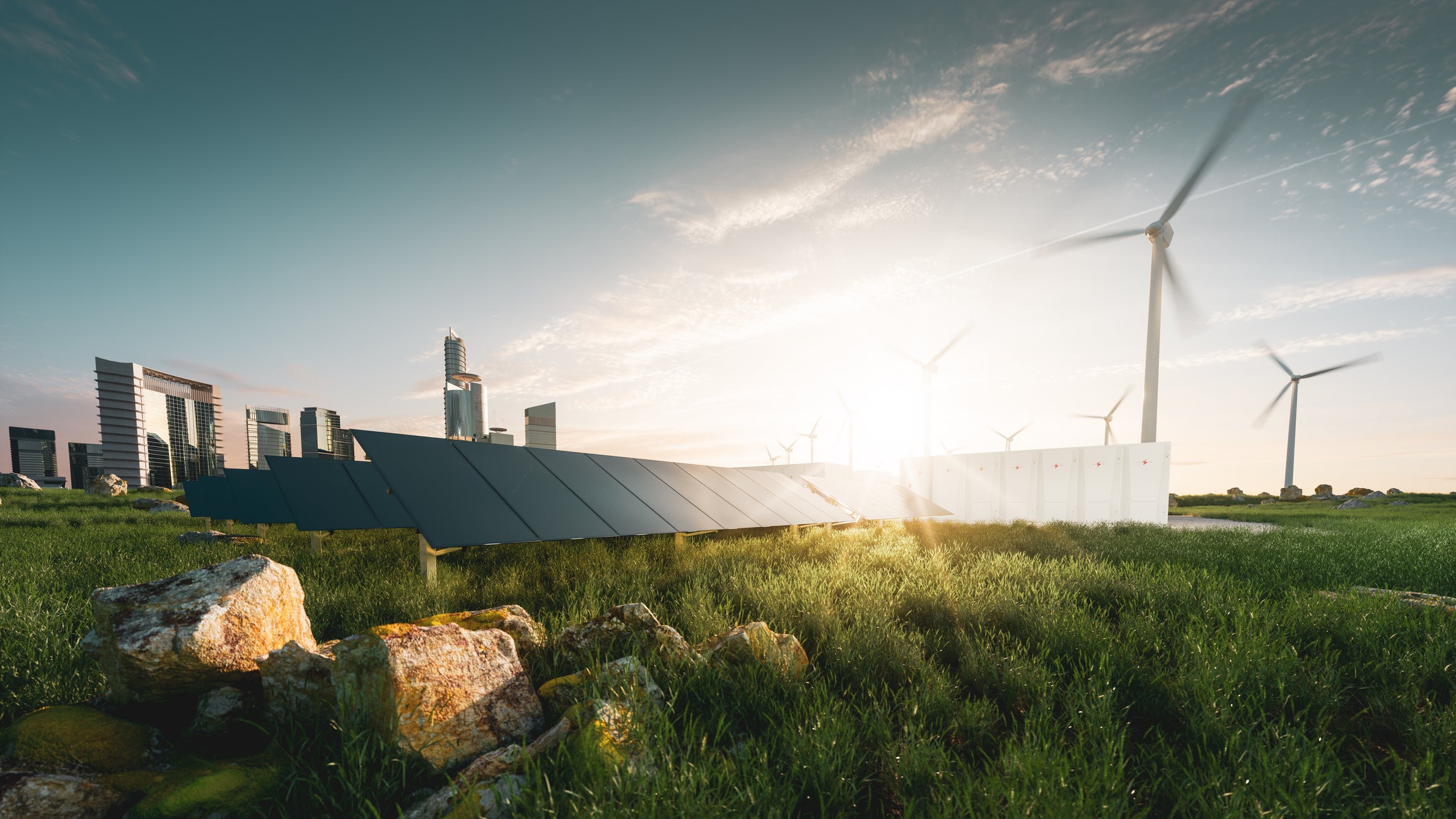
One year later: What’s next for the bipartisan infrastructure law’s historic investments in new climate tech?
A year ago, President Biden signed the bipartisan Infrastructure Investment and Jobs Act into law, the largest investment in infrastructure since the New Deal.
Among the many key climate investments included, the infrastructure law put a long-awaited down payment on several new and promising climate solutions including carbon dioxide removal, hydrogen, long-term energy storage and technologies to support clean industry.
We spoke with Natasha Vidangos, Senior Director for Climate Innovation and Technology at Environmental Defense Fund, about what’s next for these investments and how they can help us tackle the climate crisis.
Why are these investments in new climate technologies a big deal?
NV: This funding is remarkable for a few reasons. While we have many of the solutions we need to combat the climate crisis at our fingertips today – such as clean energy and electric trucks, buses and cars – there are still areas of our economy where our current toolkit falls short. If we’re going to cut climate pollution down to safer levels, that is net-zero by mid-century, we’ll need to create new solutions and improve existing ones. That doesn’t happen unless we invest now.
The bipartisan infrastructure law supports public investment in research and development of key technologies that can take on these challenging areas. They have enormous potential, but getting them right is tricky, too, and requires a full community approach to chart the way forward. This includes:
- Carbon dioxide removal, which covers a variety of ways to draw down carbon pollution already in the atmosphere, such as direct air capture.
- Hydrogen, a potentially cleaner fuel that could power heavy industry, shipping and aviation.
- Long-duration energy storage, which could help save electricity generated by wind, solar and other clean sources for much longer periods of time.
This new government investment could be game-changing because we know it’s worked before: Research has shown government funding played a major role in improving wind, solar and battery technologies and substantially bringing down their costs. The cost of solar, for example, has fallen almost 90% in the past decade and is now cheaper than building new coal plants in many places in the world.
The other exciting part about this new funding is that it goes toward testing and piloting many of these technologies on the ground – beyond the lab. This is critical to actually getting these technologies all the way from concept to the market. For example, the infrastructure law will put direct air capture and hydrogen to the test through demonstration “hubs” around the country, which many states, companies and communities are applying to host right now.
What are some of those ‘challenging areas’ of our economy where we need these new climate technologies?
Industry is a big one. It’s the third largest source of climate pollution in our country and it’s projected to grow. What makes it so challenging is that it covers such a wide variety of complicated, but essential processes — from cement and steel production to manufacturing all kinds of different goods and materials. For example, to produce steel you need to heat it to over 1,000 degrees Celsius, a process that requires a massive amount of energy and lets out harmful climate and air pollution when powered by fossil fuels. We need to find better ways to do it.
The infrastructure law provides a diversity and breadth of approaches to advance climate innovation in industry: a strategy for producing alternative fuels like hydrogen; financial assistance for manufacturers to retrofit industrial facilities and make them more energy efficient; assistance to explore ways to create markets for clean materials, and more.
And for those who are watching closely – the White House just put out a Net-Zero Game Changers Strategy that articulates 37 areas of prioritization for innovation. The way the Administration takes these priorities forward, and the way they intersect with the resources in the Bipartisan Infrastructure Law and the Inflation Reduction Act may have tremendous impact on which problems we’re able to solve next.
What are the next steps for testing out these new climate technologies on the ground? What are some of the potential challenges?
It’s an old saw that great opportunity comes with great responsibility. As the next generation of solutions hit the ground, we need to think beyond the technology itself and take into account what’s needed to ensure new solutions are effective, safe and equitable. No solution scales-up successfully without challenges. We need to be ready for them.
This includes addressing known challenges, like the need to ensure that the new direct air capture hubs I mentioned earlier can monitor and verify that greenhouse gas pollution is drawn down and stored securely. We need to make sure the impact is as good as we think it is!
It also requires addressing emerging challenges, like the insight from EDF scientists and a growing community of international scientists that hydrogen emissions can produce significant indirect climate warming – potentially 30 times greater than carbon dioxide over the first 20 years of its release. The sensors to measure hydrogen leakage at relevant levels are still in the research and development stage, so we need the Department of Energy to increase funding and partnerships to develop them (like they’ve done with this recent funding announcement). Where we don’t have all the answers, we need to incentivize the use of common-sense best practices wherever possible, and start collecting data and supporting research so we can get to the answers faster.
What could these new investments mean for communities? How will they be involved?
Communities have a major stake in these new investments, so working hand-in-hand with them as we deploy new technologies is essential.
It is hard to understate the importance and complexity of this topic. While we know we need to think about scaling-up solutions and accelerating progress, we also know that we can’t take a “one size fits all” approach to community engagement. No two communities are the same, and no one knows better than they do about their needs and priorities.
There are some foundational areas where there are no-regrets actions, like ensuring strong protections for communities’ health and wellness by reducing pollution and increasing transparency. We also need early and authentic partnership to ensure these investments are actually welcomed by the community, and come with benefits that speak to their priorities, such as good-paying job opportunities, quality training programs, reduced pollution, or access to roads, clean water, or other needed infrastructure. Getting these details right is especially important for communities with a legacy of pollution impacts, which are disproportionately communities of color and low-income communities.
Authentic and meaningful community engagement is just the start, though. We also need to think about how the entire innovation process – from researching a brand new technology all the way to bringing it to our fingertips – can deliver positive outcomes for more people.
What role will EDF play in shaping the new climate technologies you mentioned?
We’re in a pivotal moment to shape the next generation of the solutions, and we can’t afford to get it wrong. The climate emergency is upon us, and the urgency is real. Some take this to mean we need to move faster, emphasizing ways to more quickly scale-up and build new technologies on the ground. Others say we need to do better, improving guardrails and making space for processes that ensure the deployment of new technologies is transparent, safe, and collaborative.
In reality, we need to do both – and with great care. EDF has teams of scientists, policy and industry experts working across disciplines to take a more holistic approach on supporting new technologies, so that we can address many of the challenges I mentioned above simultaneously, rather than in siloes.
To sum it all up: The infrastructure law made a historic investment in promising – potentially game-changing – climate technologies, but our next steps to ensure they fully deliver for our communities, economy and climate matter enormously.
Let’s honor this anniversary by taking the first steps to do it right.












